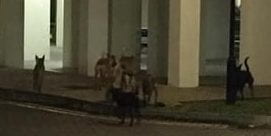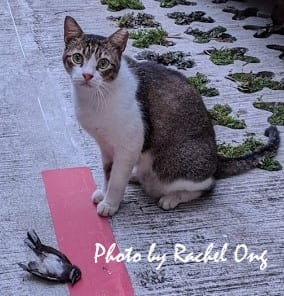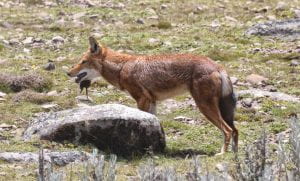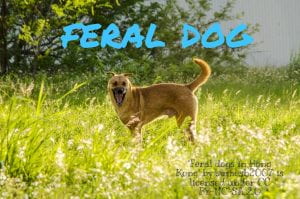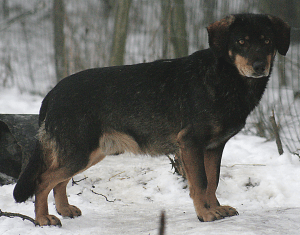Hi everyone! Let us assess the alternatives and make the environmental decision on whether “Should we allow roaming of cats, knowing their impacts on the health of otters and humans?”
In addressing ethical concerns like how Islam teaches Muslims to give their cats freedom, we could look into another driver of the extra poop – Abandoned cats. When not well-managed, it could escalate into a bigger free-ranging domestic cat (FRDC) population. This would translate to persisting environmental problems, including the threats to otter lives.
In the context of Singapore, I do believe an alternative would be the compulsory microchipping of cats to reduce abandonment rates. Currently, the ownership of cats is banned by HDB, who reasoned that cats defecate in public areas. Microchipping could be a silver bullet in solving both the environmental impacts caused by roaming cats and the growing abandonment rate of cats in Singapore. Even though it is against the law to abandon cats, it’s hard for abandoners to get caught.
For example, this CCTV footage caught someone abandoning cats. Unfortunately, the face was blur, and the relevant authorities could not find the culprit.
Screenshot of CCTV footage of someone abandoning 5 kittens. Photo by Rachel Ong
 The 5 Kittens abandoned. Photo by Rachel Ong
The 5 Kittens abandoned. Photo by Rachel Ong
Microchipping is supported by the Member of Parliament, Mr Louis Ng. Not only does microchipping promote responsible cat ownership, but it can also provide good traceability in the event of a disease outbreak.
With more liable owners, there would be a drop in the population of roaming and abandoned cats, meaning lesser poop and environmental impacts. In the context of other larger countries, it may be harder to enforce microchipping and measure the effectiveness of microchipping.
Considering how roaming owned cats causes problems, the bigger problem is the FRDC in the wild spaces. A target of eradicating 2 million cats in Australia was made. I find that culling is not a silver bullet to solving the situation, as further roaming and abandonment can refuel the feline population at cull sites (Lazenby et al., 2015). Culling itself can cue the entry of other invasive species like rodents, which carry more infectious diseases than cats. One of the worries raised was how culling may distract the strong stakeholders from focusing on other serious threats like habitat loss (Doherty et al., 2019)
In making the decision, I believe that the precautionary stance should be taken with a multi-pronged approach. There should be a legislation of compulsory microchipping of cats to reduce abandonment rates. As justification, microchipping can better promote responsible cat ownership and a sense of responsibility in not roaming cats. In turn, this makes it easier to communicate the negative impacts of roaming cats to owners, and eventually implement the ban on roaming cats. As a form of justification, by not roaming cats, the lives of the FRDC previously culled to reduce threats to biodiversity would not be “wasted”.
Lastly to reflect the decision-making process, my classmates Marcus and Clive have raised other stakeholders like water treatment agencies, where I found that UV treatment can inactivate toxoplasma gondii. Also, veterinarians and scientists could help further improve the Toxoplasma gondii vaccine for cats to mitigate impacts on the otters. These developments does seem hopeful! However, the effectiveness of water treatment and the potential consequences of the vaccine on otters or human health have yet to be explored.
Let us remember how free-ranging domestic dogs and cats are just one of the causes leading to biodiversity loss. It is important to also invest time and concern in other even major threats to biodiversity like habitat loss, pollution, and overharvesting, all fuelled by human population growth.
Thank you for sticking to this last blog entry!
P.S Thank you to Dr Coleman and my friends for helping me improve on my blog!
References:
Doherty, T. S., Driscoll, D. A., Nimmo, D. G., Ritchie, E. G., & Spencer, R. (2019). Conservation or politics? australia’s target to kill 2 million cats. Conservation Letters, 12(4), e12633-n/a. doi:10.1111/conl.12633
Lazenby, Billie & Mooney, Nicholas & Dickman, Christopher. (2014). Effects of low-level culling of feral cats in open populations: A case study from the forests of southern Tasmania. Wildlife Research. 41. 407. 10.1071/WR14030.

